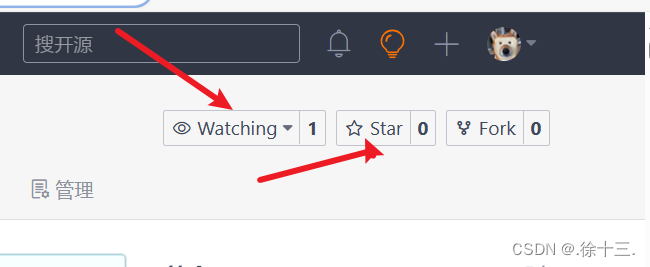最新版本Vue3的学习笔记-第四章
2023-12-26 22:02:57
最新版本Vue3的学习笔记-第一章
最新版本Vue3的学习笔记-第二章
最新版本Vue3的学习笔记-第三章(上部)
最新版本Vue3的学习笔记-第三章(下部)
最新版本Vue3的学习笔记-第四章
4. 路由
4.1. 【对路由的理解】

4.2. 【基本切换效果】
-
Vue3中要使用vue-router的最新版本,目前是4版本。 -
路由配置文件代码如下:
import {createRouter,createWebHistory} from 'vue-router' import Home from '@/pages/Home.vue' import News from '@/pages/News.vue' import About from '@/pages/About.vue' const router = createRouter({ history:createWebHistory(), routes:[ { path:'/home', component:Home }, { path:'/about', component:About } ] }) export default router
-
main.ts代码如下:import router from './router/index' app.use(router) app.mount('#app')
-
App.vue代码如下<template> <div class="app"> <h2 class="title">Vue路由测试</h2> <!-- 导航区 --> <div class="navigate"> <RouterLink to="/home" active-class="active">首页</RouterLink> <RouterLink to="/news" active-class="active">新闻</RouterLink> <RouterLink to="/about" active-class="active">关于</RouterLink> </div> <!-- 展示区 --> <div class="main-content"> <RouterView></RouterView> </div> </div> </template> <script lang="ts" setup name="App"> import {RouterLink,RouterView} from 'vue-router' </script>
4.3. 【两个注意点】
路由组件通常存放在
pages或views文件夹,一般组件通常存放在components文件夹。通过点击导航,视觉效果上“消失” 了的路由组件,默认是被卸载掉的,需要的时候再去挂载。
4.4.【路由器工作模式】
-
history模式优点:
URL更加美观,不带有#,更接近传统的网站URL。缺点:后期项目上线,需要服务端配合处理路径问题,否则刷新会有
404错误。const router = createRouter({ history:createWebHistory(), //history模式 /******/ }) -
hash模式优点:兼容性更好,因为不需要服务器端处理路径。
缺点:
URL带有#不太美观,且在SEO优化方面相对较差。const router = createRouter({ history:createWebHashHistory(), //hash模式 /******/ })
4.5. 【to的两种写法】
<!-- 第一种:to的字符串写法 -->
<router-link active-class="active" to="/home">主页</router-link>
<!-- 第二种:to的对象写法 -->
<router-link active-class="active" :to="{path:'/home'}">Home</router-link>
4.6. 【命名路由】
作用:可以简化路由跳转及传参(后面就讲)。
给路由规则命名:
routes:[
{
name:'zhuye',
path:'/home',
component:Home
},
{
name:'xinwen',
path:'/news',
component:News,
},
{
name:'guanyu',
path:'/about',
component:About
}
]
跳转路由:
<!--简化前:需要写完整的路径(to的字符串写法) -->
<router-link to="/news/detail">跳转</router-link>
<!--简化后:直接通过名字跳转(to的对象写法配合name属性) -->
<router-link :to="{name:'guanyu'}">跳转</router-link>
4.7. 【嵌套路由】
-
编写
News的子路由:Detail.vue -
配置路由规则,使用
children配置项:const router = createRouter({ history:createWebHistory(), routes:[ { name:'zhuye', path:'/home', component:Home }, { name:'xinwen', path:'/news', component:News, children:[ { name:'xiang', path:'detail', component:Detail } ] }, { name:'guanyu', path:'/about', component:About } ] }) export default router -
跳转路由(记得要加完整路径):
<router-link to="/news/detail">xxxx</router-link> <!-- 或 --> <router-link :to="{path:'/news/detail'}">xxxx</router-link> -
记得去
Home组件中预留一个<router-view><template> <div class="news"> <nav class="news-list"> <RouterLink v-for="news in newsList" :key="news.id" :to="{path:'/news/detail'}"> {{news.name}} </RouterLink> </nav> <div class="news-detail"> <RouterView/> </div> </div> </template>
4.8. 【路由传参】
query参数
-
传递参数
<!-- 跳转并携带query参数(to的字符串写法) --> <router-link to="/news/detail?a=1&b=2&content=欢迎你"> 跳转 </router-link> <!-- 跳转并携带query参数(to的对象写法) --> <RouterLink :to="{ //name:'xiang', //用name也可以跳转 path:'/news/detail', query:{ id:news.id, title:news.title, content:news.content } }" > {{news.title}} </RouterLink> -
接收参数:
import {useRoute} from 'vue-router' const route = useRoute() // 打印query参数 console.log(route.query)
params参数
-
传递参数
<!-- 跳转并携带params参数(to的字符串写法) --> <RouterLink :to="`/news/detail/001/新闻001/内容001`">{{news.title}}</RouterLink> <!-- 跳转并携带params参数(to的对象写法) --> <RouterLink :to="{ name:'xiang', //用name跳转 params:{ id:news.id, title:news.title, content:news.title } }" > {{news.title}} </RouterLink> -
接收参数:
import {useRoute} from 'vue-router' const route = useRoute() // 打印params参数 console.log(route.params)
备注1:传递
params参数时,若使用to的对象写法,必须使用name配置项,不能用path。备注2:传递
params参数时,需要提前在规则中占位。
4.9. 【路由的props配置】
作用:让路由组件更方便的收到参数(可以将路由参数作为props传给组件)
{
name:'xiang',
path:'detail/:id/:title/:content',
component:Detail,
// props的对象写法,作用:把对象中的每一组key-value作为props传给Detail组件
// props:{a:1,b:2,c:3},
// props的布尔值写法,作用:把收到了每一组params参数,作为props传给Detail组件
// props:true
// props的函数写法,作用:把返回的对象中每一组key-value作为props传给Detail组件
props(route){
return route.query
}
}
4.10. 【 replace属性】
-
作用:控制路由跳转时操作浏览器历史记录的模式。
-
浏览器的历史记录有两种写入方式:分别为
push和replace:push是追加历史记录(默认值)。replace是替换当前记录。
-
开启
replace模式:<RouterLink replace .......>News</RouterLink>
4.11. 【编程式导航】
路由组件的两个重要的属性:$route和$router变成了两个hooks
import {useRoute,useRouter} from 'vue-router'
const route = useRoute()
const router = useRouter()
console.log(route.query)
console.log(route.parmas)
console.log(router.push)
console.log(router.replace)
4.12. 【重定向】
-
作用:将特定的路径,重新定向到已有路由。
-
具体编码:
{ path:'/', redirect:'/about' }
项目源码有帮助到你的,清点个小星星
文章来源:https://blog.csdn.net/apple_51927114/article/details/135229567
本文来自互联网用户投稿,该文观点仅代表作者本人,不代表本站立场。本站仅提供信息存储空间服务,不拥有所有权,不承担相关法律责任。 如若内容造成侵权/违法违规/事实不符,请联系我的编程经验分享网邮箱:veading@qq.com进行投诉反馈,一经查实,立即删除!
本文来自互联网用户投稿,该文观点仅代表作者本人,不代表本站立场。本站仅提供信息存储空间服务,不拥有所有权,不承担相关法律责任。 如若内容造成侵权/违法违规/事实不符,请联系我的编程经验分享网邮箱:veading@qq.com进行投诉反馈,一经查实,立即删除!